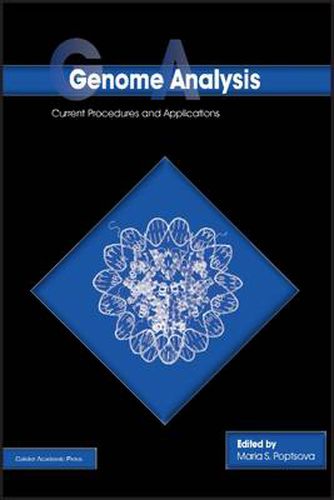Readings Newsletter
Become a Readings Member to make your shopping experience even easier.
Sign in or sign up for free!
You’re not far away from qualifying for FREE standard shipping within Australia
You’ve qualified for FREE standard shipping within Australia
The cart is loading…






In recent years, there have been tremendous achievements made in DNA sequencing technologies and corresponding innovations in data analysis and bioinformatics that have revolutionized the field of genome analysis. In this book, an impressive array of experts highlight and review current advances in genome analysis. The book provides an invaluable, up-to-date, and comprehensive overview of the methods currently employed for next-generation sequencing (NGS) data analysis. It also highlights their problems and limitations, and it demonstrates the applications and indicates the developing trends in various fields of genome research. The first part of the book is devoted to the methods and applications that arose from, or were significantly advanced by, NGS technologies: the identification of structural variation from DNA-seq data * whole-transcriptome analysis and discovery of small interfering RNAs (siRNAs) from RNA-seq data * motif finding in promoter regions, enhancer prediction, and nucleosome sequence code discovery from ChiP-Seq data * identification of methylation patterns in cancer from MeDIP-seq data * transposon identification in NGS data * metagenomics and metatranscriptomics * NGS of viral communities * causes and consequences of genome instabilities. The second part is devoted to the field of RNA biology, while the final three chapters are devoted to computational methods of RNA structure prediction, including context-free grammar applications.
$9.00 standard shipping within Australia
FREE standard shipping within Australia for orders over $100.00
Express & International shipping calculated at checkout
In recent years, there have been tremendous achievements made in DNA sequencing technologies and corresponding innovations in data analysis and bioinformatics that have revolutionized the field of genome analysis. In this book, an impressive array of experts highlight and review current advances in genome analysis. The book provides an invaluable, up-to-date, and comprehensive overview of the methods currently employed for next-generation sequencing (NGS) data analysis. It also highlights their problems and limitations, and it demonstrates the applications and indicates the developing trends in various fields of genome research. The first part of the book is devoted to the methods and applications that arose from, or were significantly advanced by, NGS technologies: the identification of structural variation from DNA-seq data * whole-transcriptome analysis and discovery of small interfering RNAs (siRNAs) from RNA-seq data * motif finding in promoter regions, enhancer prediction, and nucleosome sequence code discovery from ChiP-Seq data * identification of methylation patterns in cancer from MeDIP-seq data * transposon identification in NGS data * metagenomics and metatranscriptomics * NGS of viral communities * causes and consequences of genome instabilities. The second part is devoted to the field of RNA biology, while the final three chapters are devoted to computational methods of RNA structure prediction, including context-free grammar applications.